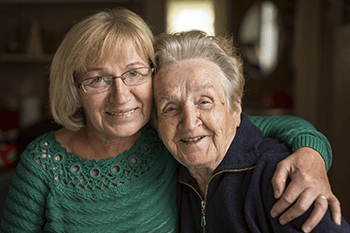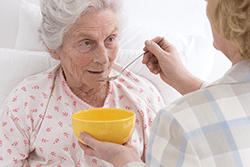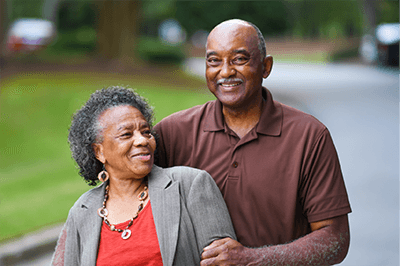Diabetes 101 - Diabetes Causes, Effects, and Prevention in Seniors
By LaToya Waldo, Owner/Administrator, Comfort Keepers of the Low Country

During Diabetes Awareness Month, Don't Miss These Expert Tips on Coping with and Preventing Type 2
Do you have a loved one who is facing the struggles of Type 2? Are you a care giver for a patient in home sector care? Do you want to provide the very best home health care for your patient with Type 2?
If you answered "yes" to any of these questions, then read on to learn the causes of Type 2, prevention tips and what to think about when it comes to long-term home care for your Type 2 patient.
There's a lot to learn, so let's get started:
What Are the Causes of Type 2?
What is known as Type 2 is a strain of the condition that most people get in adulthood. Often it is called "adult onset." It differs from Type 1 in that this strain typically is one that you acquire while developing as a baby in the womb. The cause of Type 1 is unknown, although the medical community believes it is due to some form of genetics and environmental factors.
On the other hand, Type 2 is caused by cells that become resistant to insulin. The patient's pancreas cannot make a sufficient amount of insulin to fight back, and sugar remains in high amounts in the body's bloodstream. In this strain, researchers believe that genetics and the environment also are factors, although obesity is also linked to it.
Some of the common symptoms of both strains are:
- Increased urination
- Extreme hunger pangs
- Weight loss that cannot be otherwise attributed
- Extreme thirst
- Blurry vision
- Lethargy
- Moodiness
- Sores that heal slowly
- Increased and frequent infections (gum, skin, vaginal)
- Ketones in urine, a byproduct of fat/muscle breakdown in the absence of insulin)
How Can I Prevent Type 2?
If you or a loved one has been told that you are "prediabetes," then it's time to take action. Once you have full-blown Type 2, there is no way to reverse the condition and you put yourself at risk for more complications later in life -- including feet amputation.
Here are five tips for preventing Type 2 that you or your loved one can work on today:
Tip #1: Start Exercising
You can start controlling your blood sugar simply by exercising. That's because exercise helps to strengthen your sensitivity to insulin, which then regulates your blood sugar. In addition, there are so many other benefits to exercising -- including increasing your blood circulation, improving your emotional health and maintaining your weight.
Tip #2: Lose Weight
The more you exercise, the better chances you have for losing weight. Considering being overweight is a factor that makes you susceptible to Type 2, it's important to try to eat a healthy diet and to exercise in order to get your weight under control. Work on an exercise and eating plan that works for you. Start slow and commit to a routine for your future health.
Tip #3: Increase Your Fiber Intake
Adding more fiber to your diet helps to control your blood sugar. It may mean more trips the bathroom, but ultimately, it's worth it. Foods that have a high fiber content that you can start adding to your meal plans immediately include:
- Vegetables
- Fruits
- Nuts
- Whole grains
- Beans
As a bonus, adding more fiber to your diet can result in lower risk for both Type 2 and heart disease.
Tip #4: Eat More Whole Grains
Adding more whole grains to your diet is an easy way to help prevent Type 2. Whole grains are found in many read-to-eat foods, which make them super easy to add to your meals or have a quick snack. For example, these whole-grain foods are good options:
- Cereals
- Breads
- Pastas
When you are reading labels, make sure you see the word "whole" so that you can have confidence you're adding true whole grains to your diet!
Tip #5: Forgo the Fads
There is nothing that can replace a healthy lifestyle -- and that includes eating well-balanced meals and exercising. So while diet fads are tempting, they don't produce a long-term solution you can trust. Instead, make it a goal to live a healthy lifestyle, and you'll be on your way to preventing Type 2 from developing in you or someone you love or care for in the home.

What Are Some of the Ways to Cope?
When you or a loved one is diagnosed with Type 2, it can be shocking and difficult to comprehend. The unfortunate part of the condition is that once you have it, you cannot reverse it.
Here are a few ways to begin coping with your diagnosis and to move forward in as healthy a lifestyle as you can:
- Accept your diagnosis and learn everything you can to move forward.
- Rely on others for help: Your caregiver, your doctor, your loved ones
- Develop a diabetes management plan, which may include a meal plan, an exercise schedule and a medication plan
- Record your blood sugar levels every day to keep check on your levels
- Exercise and eat healthy meals
- Avoid all processed sugars and keep natural sugars in check
- Follow up with your doctor regularly or any time you are feeling sick or off
What Should I Be Thinking about Long-term Care for a Loved One with Type 2?
As Type 2 patients grow older, there is much to consider. Caring for a loved one with Type 2 can be complicated -- as blood sugar levels that drop can result in fainting, weakness, foot complications and more.
If you are thinking about how you will care for a loved one or patient with Type 2, make sure you are doing research on a caring and trusted home care or skilled nursing care place that has staff who are knowledge in Type 2 care.
In particular, as a caregiver long-term, you should be trying to encourage your patient to exercise a little every day -- even if it walking around the house or neighborhood -- and eating balanced meals.
In addition, you're going to want to monitor the condition of the Type 2 patient's feet. Wash the person's feet in lukewarm water every day -- and pat dry gently. Moisturize regularly -- but not in between the toes -- and inspect for sores that are new or are not healing quickly. Foot and leg amputation is a very real part of Type 2, so you'll want to consult with your doctor as soon as you see a blister or sore or other foot condition and especially if the condition is not healing properly.
Don't wait until it is too late when it comes to a Type 2 person's feet. Intervention is necessary, along with proper care and healthy living.
Finally, start saving now for long-term healthcare of a person with Type 2. If they require staying in a nursing home, they will need skilled nursing care. The condition often requires medication later in life as a patient grows older and attention to detail in the exercise and eating lifestyle of the patient.
Are You Ready to Provide Better Home Health Care for a Type 2 Patients?
Living with Type 2 diabetes is a challenge throughout a lifetime -- but especially as a patient grows older and cannot necessarily care for themselves. Use this guide to plan for the unexpected and to know what to expect when that time comes for prevention, coping and care.
Remember, whether you are the relative or caregiver of a patient with Type 2, you can be part of the solution. You already know how challenging it can be to provide excellent and consistent care. Type 2 can complicate the health issues of elderly patients especially, as they can become weak and even pass out. Take steps together -- and today -- as you plan for the future.
Keep this guide handy as you provide in home senior care or seek out home care for your loved one with Type 2. With a little planning and preparation, you'll be better equipped to care for your elderly patient in a compassionate and comprehensive way over the long term.
Finally, what have you learned about caring for elderly patients with Type 2 -- in your own caregiving or in home senior care experience? What have you learned in the prevention and treatment of your own Type 2 condition?
Let us know by leaving a comment below -- and join the community supporting and educating on Type 2 causes, prevention and coping tips. What has worked for you? What hasn't? We want to hear from you!

From our main office in Bluffton, SC we serve the senior residents of Bluffton, Okatie, Hilton Head Island, Beaufort, Sun City, Palmetto Bluff, Callawassie Island, Fripp Island, Walterboro and the surrounding communities.
We provide quality, customized care, including dementia and personal care, senior companionship and help around the home for seniors who wish to live independently at home.
We also proudly provide care for veterans and can assist eligible veterans and spouses obtain Aid & Attendance Benefits from the Veterans Administration. If you have questions about our caregiving services or would like to receive a free in home needs assessment and senior home safety inspection, please call our office at (843) 757-7731 or contact us online.









